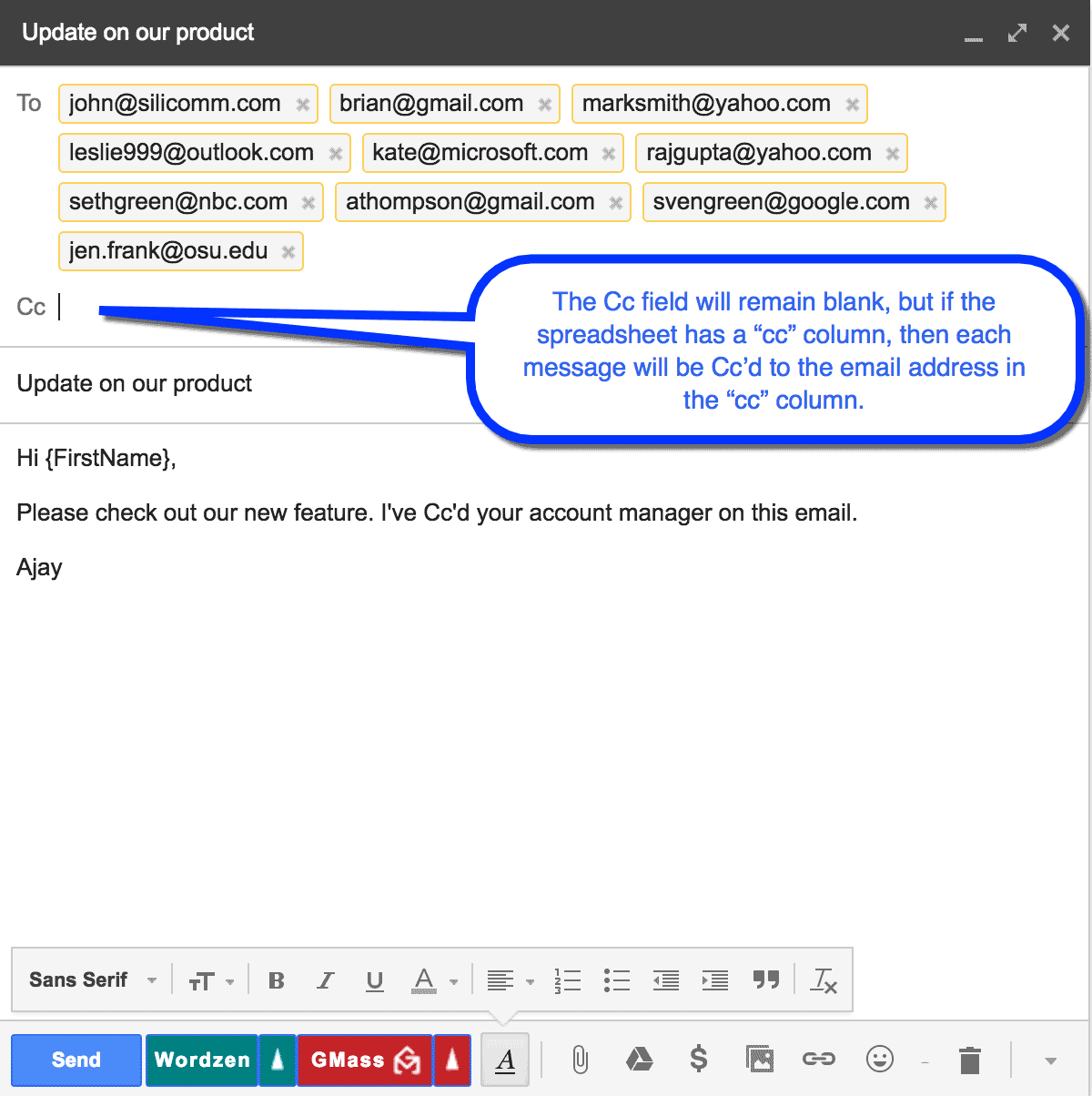Email communication has become an integral part of our daily lives, and understanding its various components is crucial for effective correspondence. One term that often arises in email discussions is "CC." In this article, we will explore the CC meaning in email, its significance, and how to use it effectively. Whether you are a beginner in email etiquette or looking to refine your skills, this guide will provide valuable insights into using CC in your email communications.
Email has transformed the way we communicate, making it faster and more efficient. However, with this convenience comes the need to understand the various terminologies and features associated with email. One such feature is the CC field, which stands for "Carbon Copy." This term dates back to the days of typewriters when a sheet of carbon paper was used to create a duplicate copy of a document. In the digital age, CC allows users to include multiple recipients in an email without making them the primary audience.
In the following sections, we will delve deeper into the meaning of CC in emails, its purpose, best practices for usage, and the differences between CC and other related terms like BCC. By the end of this article, you will have a comprehensive understanding of how to use CC to enhance your email communication.
Table of Contents
- 1. What Does CC Mean in Email?
- 2. The Purpose of Using CC in Emails
- 3. When to Use CC in Email Communication
- 4. Best Practices for Using CC in Emails
- 5. CC vs. BCC: Understanding the Differences
- 6. Common Mistakes to Avoid When Using CC
- 7. CC in Professional Email Settings
- 8. Conclusion
1. What Does CC Mean in Email?
The term "CC" is an abbreviation for "Carbon Copy." In the context of email, it refers to the practice of sending a copy of an email to additional recipients beyond the primary recipient. When you add recipients to the CC field, they receive the same email as the primary recipient, but they are not the main audience for the message.
1.1 Historical Context of CC
The concept of CC dates back to the era of typewriters when carbon paper was used to create duplicate copies of documents. This practice has been adapted to modern email communication, allowing users to keep others informed without requiring a direct response from them.
2. The Purpose of Using CC in Emails
Using CC in emails serves several purposes:
- Transparency: CCing relevant parties ensures that everyone is on the same page regarding the conversation.
- Information Sharing: It allows for the dissemination of information to multiple stakeholders simultaneously.
- Accountability: CCing supervisors or managers can help hold team members accountable for their actions.
3. When to Use CC in Email Communication
Knowing when to use CC is crucial for effective email communication. Here are some scenarios where CC is appropriate:
- When you want to keep someone informed about a conversation without requiring their direct input.
- When multiple parties need to be aware of the same information.
- When you want to maintain a record of communication for future reference.
4. Best Practices for Using CC in Emails
To use CC effectively in your emails, consider the following best practices:
- Limit the number of recipients to avoid overwhelming others with unnecessary emails.
- Make sure that the CC recipients are relevant to the conversation.
- Use a clear subject line to ensure that everyone understands the email's purpose.
5. CC vs. BCC: Understanding the Differences
It is essential to differentiate between CC and BCC (Blind Carbon Copy). While CC allows all recipients to see each other's email addresses, BCC hides the recipients' addresses from one another. This is useful for protecting privacy when sending mass emails.
6. Common Mistakes to Avoid When Using CC
Avoid these common mistakes when using CC:
- Overusing CC, which can lead to email fatigue.
- CCing individuals who do not need to be part of the conversation.
- Failing to inform CC recipients of their inclusion in the email.
7. CC in Professional Email Settings
In professional settings, using CC can enhance communication and collaboration. It is particularly useful for keeping teams informed about project updates, decisions made in meetings, and important announcements. However, maintaining professionalism and clarity is key to effective communication.
8. Conclusion
In conclusion, understanding the CC meaning in email is essential for effective communication. It allows you to keep relevant parties informed while maintaining transparency and accountability. By following best practices and avoiding common mistakes, you can enhance your email communication skills and foster better collaboration with your colleagues and clients.
We encourage you to leave your comments, share this article, or explore more of our content to deepen your understanding of email communication.
Thank you for reading, and we look forward to seeing you again soon!
Penelope Cruz: A Model Of Talent And Elegance
Good Morning Thursday: Embracing The Midweek Boost
Daniel Galvin Junior: The Legacy Of A Hairdressing Icon


